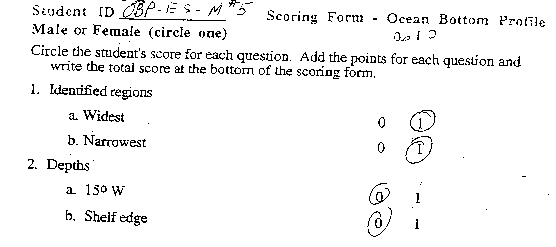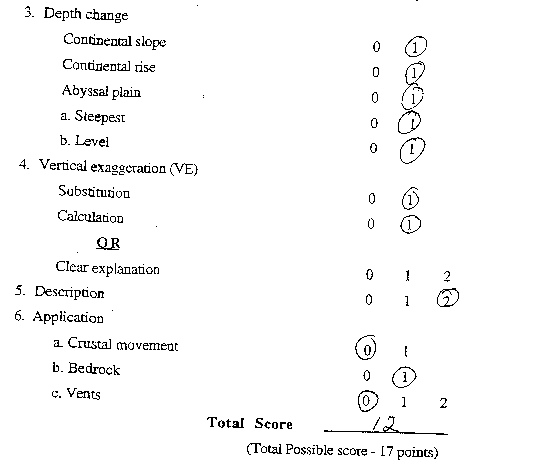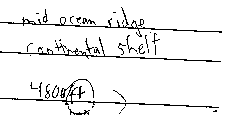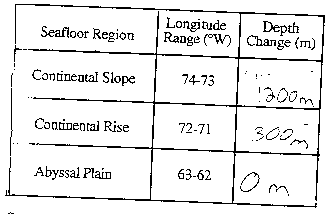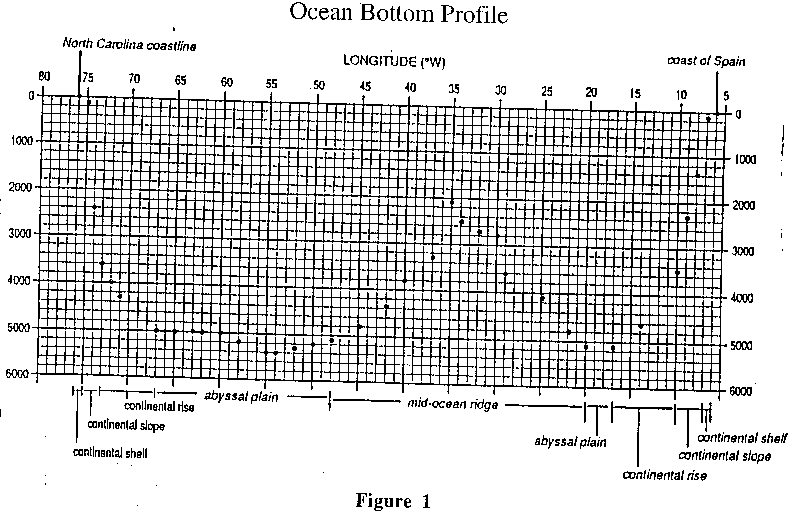 |
 |
|
|
|
|
Grade 5-8 Performance Task Student #2
1. According to the profile:
3. Look at Figure 1. Note the seafloor regions listed in the first column and the 1 degree longitude ranges in the in the second column. Locate these same longitudes in Figure 1. Determine the change in depth that occurs between each pair of longitudes and record the value in the third column.
Which seafloor region is widest?
4. Determine the vertical exaggeration (VE) of Figure 1. (Hint: Determine the number of meters in one horizontal square and the number of meters in one vertical square. Remember that 1 kilometer = 1000 meters.) For full credit, you must either explain your reasoning or show your work.
5. Using complete sentences, compare the profile in Figure 1 to the appearance of a true scale profile of these ocean depths.
6. The bedrock of the ocean floor is youngest at the mid-ocean ranges and is older as distance increases away from the ridges. Using one or more complete sentences and based on your knowledge of plate tectonics answer the following questions:
Figure 1: |
